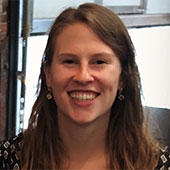Careful Observation
The essence of UX research is careful observation. Anyone can ask questions, but a great UX researcher is also a skilled observer. When people are interacting with a product, how do they react? What are they doing? What is their body language? Are they slumped and standoffish or leaning in and engaged? What are their facial expressions—confused, excited, annoyed, concerned, or delighted? What is their tone—serious, light-hearted, curious, upbeat, or dejected?
For example, while a participant might say he likes a new insights feature, a UX researcher notices that he looks confused and disengaged when he’s interacting with it. The researcher must first notice this discrepancy, then he can dig into what it means. Why does he like this feature? How would he use it in his daily work? If the participant can’t provide thoughtful answers to these questions, he might just be trying to avoid hurting the product team’s feelings.
I once conducted a study on how users could upload documents to a cloud-based, document-management platform. To save engineering time and effort, the product team wanted to install a floating sidebar menu that, when expanded, displayed an Upload button. When I interviewed participants, all of them really struggled to find this button, which was not seamlessly integrated into the workflow. Plus, it didn’t follow common design patterns. Most participants became increasingly confused and even a little frustrated. Some seemed to wonder whether I was playing a trick on them. Most ultimately gave up trying to find the button. Then I asked them what they expected the floating menu might do. Many stated they hadn’t even noticed the icon for the floating menu!
However, once they saw the Upload button on the menu, they began rewriting history. “Oh, that makes sense, I should’ve looked there.” Participants started second-guessing themselves and blaming themselves for not seeing it. At the end of each session, I asked for the participant’s overall thoughts on the workflow and product. One after another, participants praised the application and said how intuitive and simple it was—even though only 25% of them actually found the button on their own! They told me the product was great as is, but that clearly wasn’t true. I needed to move past what they were saying and consider what they were doing.
During early, exploratory work and contextual inquiries, careful observation is arguably even more important than in usability testing. At ADP, before developing new features, we would often visit the offices of human-resources practitioners and observe them completing their daily work. What did participants’ desk look like? What reference materials were they using? Who did they interact with and how? What were their common painpoints, bottlenecks, and workarounds?
While research participants most likely won’t be able to tell you what next amazing feature you should build, if you observe them, notice what they’re doing, and focus on frequent or painful tasks and their time-saving or ingenious workarounds, you’ll be able to help your product team create meaningful solutions for users’ problems and, thus, provide significant value.
